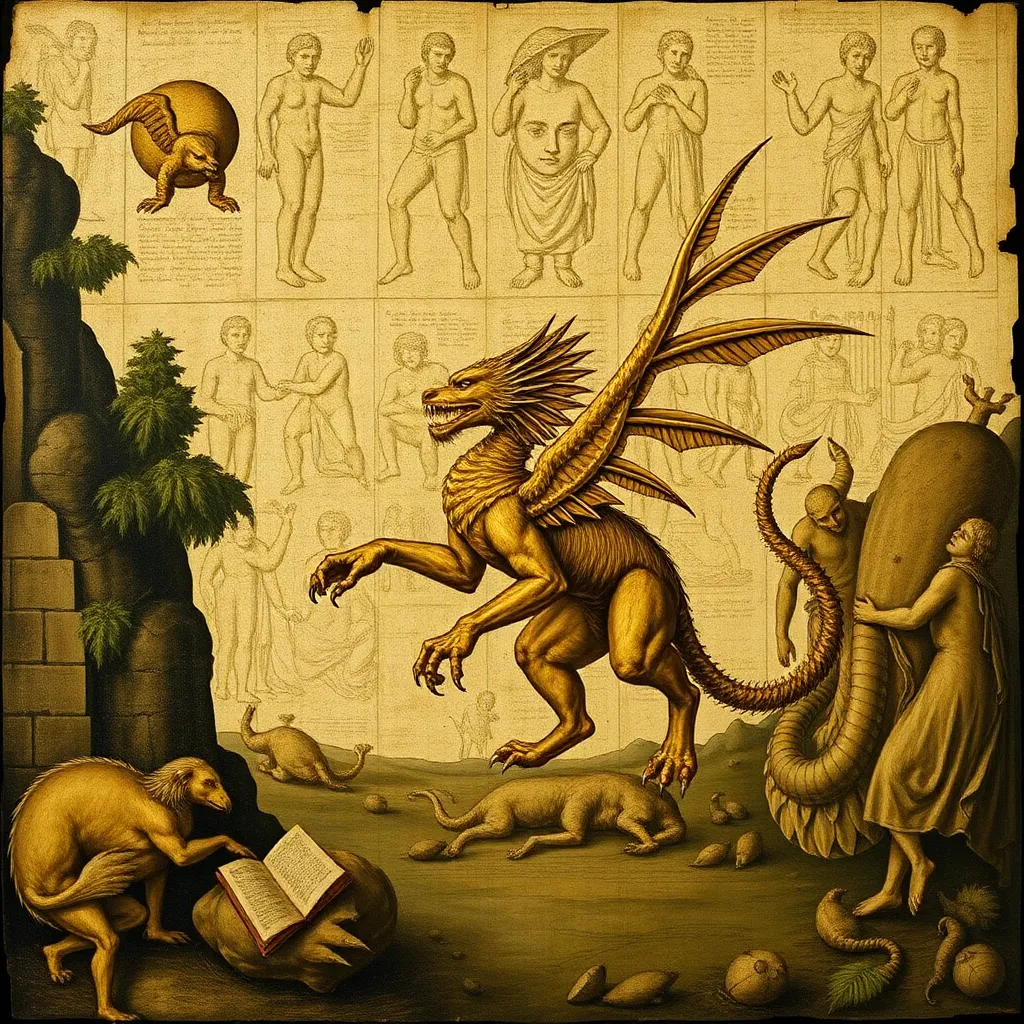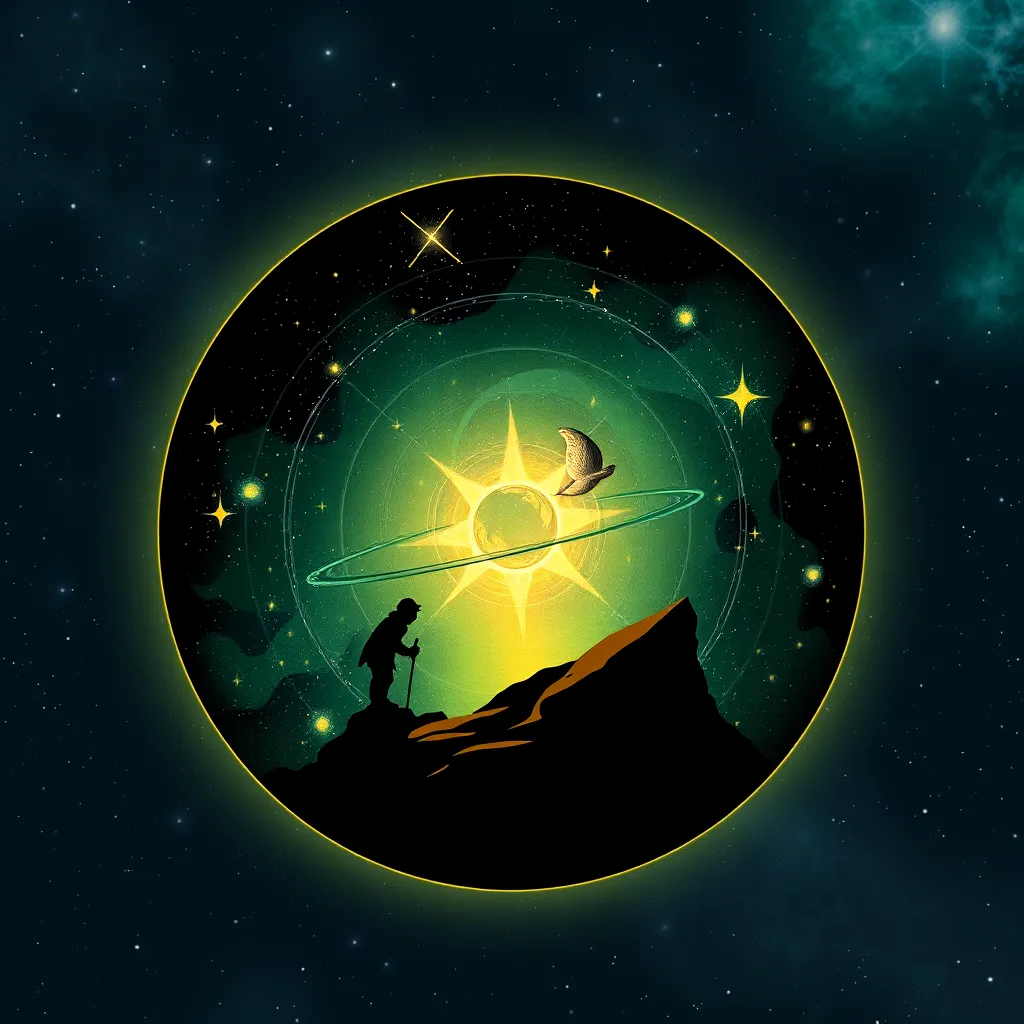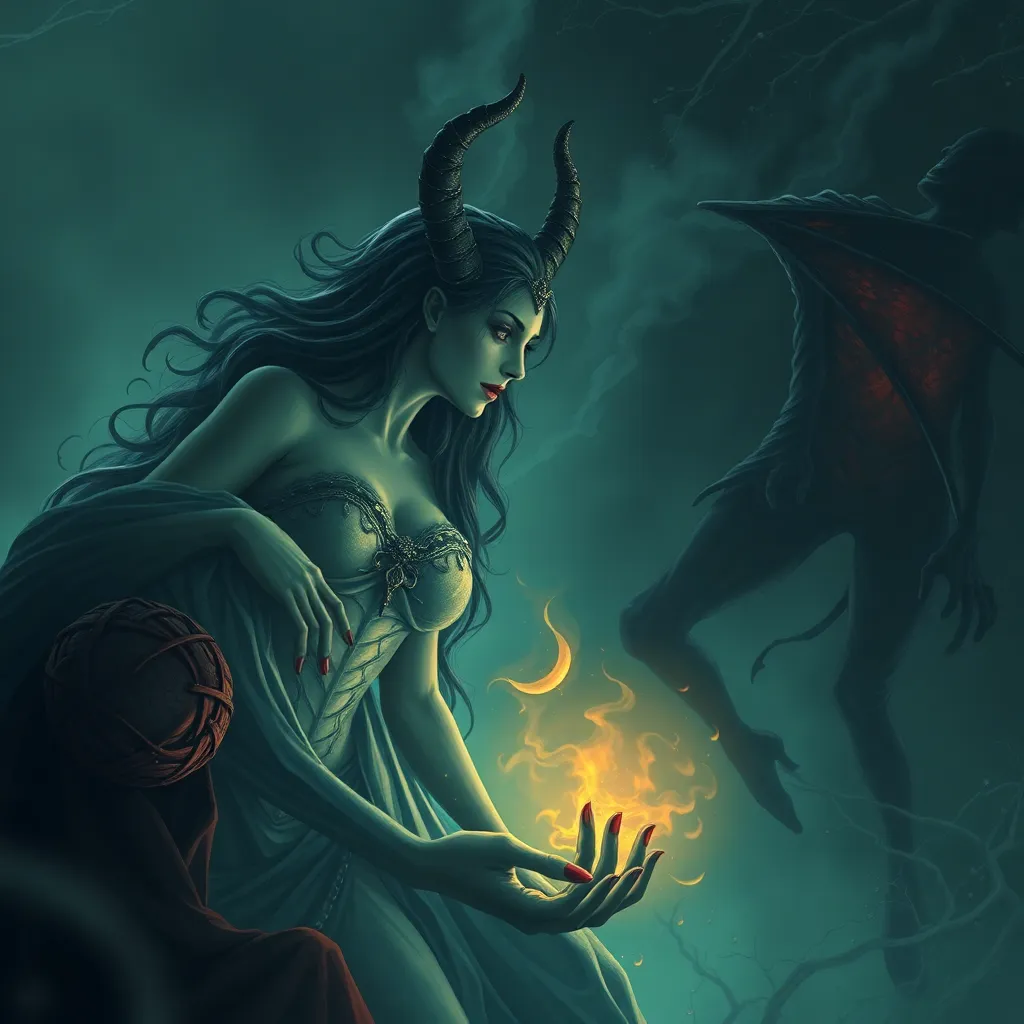The Manticore in Medieval Art: From Terrifying Beast to Symbolic Figure
I. Introduction
The manticore is a mythical creature that has captured the imagination of many throughout history. Described as having the body of a lion, the face of a human, and the tail of a scorpion, this fearsome beast is a compelling symbol of danger and the unknown. Its presence in medieval culture and art serves as a reflection of societal beliefs, fears, and the human condition.
This article aims to explore the evolution of the manticore in medieval art, tracing its origins, representations in bestiaries, artistic depictions, and its transformation into a symbolic figure. By examining the manticore’s journey through various cultural lenses, we can gain insights into the significance of this creature in medieval society.
II. Origins of the Manticore Legend
The legend of the manticore has deep historical roots, originating in Persian mythology. The name ‘manticore’ is derived from the Persian phrase ‘martichora,’ which translates to ‘man-eater.’ Ancient texts describe the manticore as a creature that preys upon humans, highlighting its role as a terrifying figure in the lore of the time.
In ancient descriptions, the manticore is said to possess several distinctive characteristics:
- A lion’s body, representing strength and ferocity.
- A human-like face, symbolizing intelligence and cunning.
- A scorpion’s tail, indicating danger and death.
As the legend transitioned from Persian mythology into medieval folklore, the manticore became a symbol of fear and the unknown, often depicted in various forms across different cultures.
III. The Manticore in Medieval Bestiaries
Medieval bestiaries, which were illustrated compendiums of animals, both real and mythical, played a crucial role in shaping the perception of the manticore. In these texts, the manticore is often described in vivid detail, emphasizing its monstrous qualities.
In bestiaries, the manticore is typically represented as a man-eating creature, embodying the dangers lurking in the world:
- It is often depicted as a fierce lion-like beast with a human head.
- The tail is shown as a scorpion’s, capable of delivering a fatal sting.
Beyond its physical description, the manticore serves as a symbol of danger and the unknown, warning readers of the perils that exist beyond the familiar world. The bestiaries influenced public perception, instilling a sense of fear and reverence for this mythical creature.
IV. Artistic Depictions of the Manticore
The manticore has been depicted in various artworks throughout the medieval period. Prominent artworks featuring the creature showcase the diversity of artistic styles and interpretations across different regions. From illuminated manuscripts to tapestries, the manticore has found a place in many artistic expressions.
Some notable examples of artistic depictions include:
- The Aberdeen Bestiary: This illuminated manuscript from the 12th century features a detailed illustration of the manticore, highlighting its fearsome attributes.
- Tapestries: Several tapestries from the late medieval period depict the manticore in hunting scenes, symbolizing the peril faced by hunters.
These artworks not only reflect the manticore’s terrifying nature but also signify the role of the creature in narratives surrounding morality and human behavior. The illuminated manuscripts, in particular, served an educational purpose, teaching moral lessons through allegorical representations of creatures like the manticore.
V. The Manticore as a Symbolic Figure
Over time, the manticore evolved from a monstrous creature into a symbol of moral lessons and allegorical meanings. This transformation reflects the changing societal values and the use of mythical creatures to convey complex ideas.
Some of the allegorical meanings associated with the manticore include:
- Power: The manticore represents the unchecked power that can be both alluring and dangerous.
- Fear: As a creature that preys on humans, it embodies the fears of the unknown and the dangers lurking in the world.
- The Human Condition: The manticore’s human-like face invites reflection on the duality of human nature – the capacity for both good and evil.
This duality makes the manticore a poignant figure in discussions about morality, ethics, and the human experience in medieval thought.
VI. The Manticore in Literature and Folklore
The manticore’s influence extends beyond art into the realm of literature and folklore. As a character in various medieval texts, the manticore has been used to illustrate moral lessons and cultural narratives.
In literature, the manticore often appears alongside other mythical creatures, such as:
- Unicorns, representing purity and grace.
- Dragons, symbolizing greed and destruction.
Comparative analyses reveal how the manticore’s role differs from these creatures. While unicorns and dragons often embody specific virtues or vices, the manticore serves as a cautionary figure, warning of the consequences of unchecked desires and the darker aspects of human nature.
The manticore’s presence in literature has helped shape cultural narratives, contributing to the rich tapestry of medieval storytelling and moral discourse.
VII. The Legacy of the Manticore in Modern Art
<pIn recent years, there has been a resurgence of interest in the manticore within contemporary art. Modern artists have revisited this mythical creature, drawing inspiration from its rich history and complex symbolism.
Some key points regarding the manticore in modern interpretations include:
- Contemporary artists often reimagine the manticore, reflecting on themes of fear, power, and identity.
- Modern representations may diverge significantly from medieval depictions, highlighting a broader spectrum of meanings.
- The manticore continues to serve as a symbol in popular culture, appearing in literature, films, and art.
This ongoing fascination with the manticore illustrates its enduring relevance as a cultural symbol, bridging the gap between medieval and modern interpretations.
VIII. Conclusion
The journey of the manticore from a fearsome beast to a symbolic figure encapsulates the complexities of medieval art and culture. Its evolution reflects societal fears, moral lessons, and the duality of the human condition. Through its appearances in bestiaries, artworks, and literature, the manticore has left a lasting legacy that continues to intrigue and captivate the imagination.
Understanding the significance of the manticore in medieval art allows us to gain deeper insights into the values and beliefs of the time. As we reflect on the enduring fascination with this mythical creature, we recognize its place not only in the annals of history but also in the ongoing dialogue about fear, power, and the human experience.



